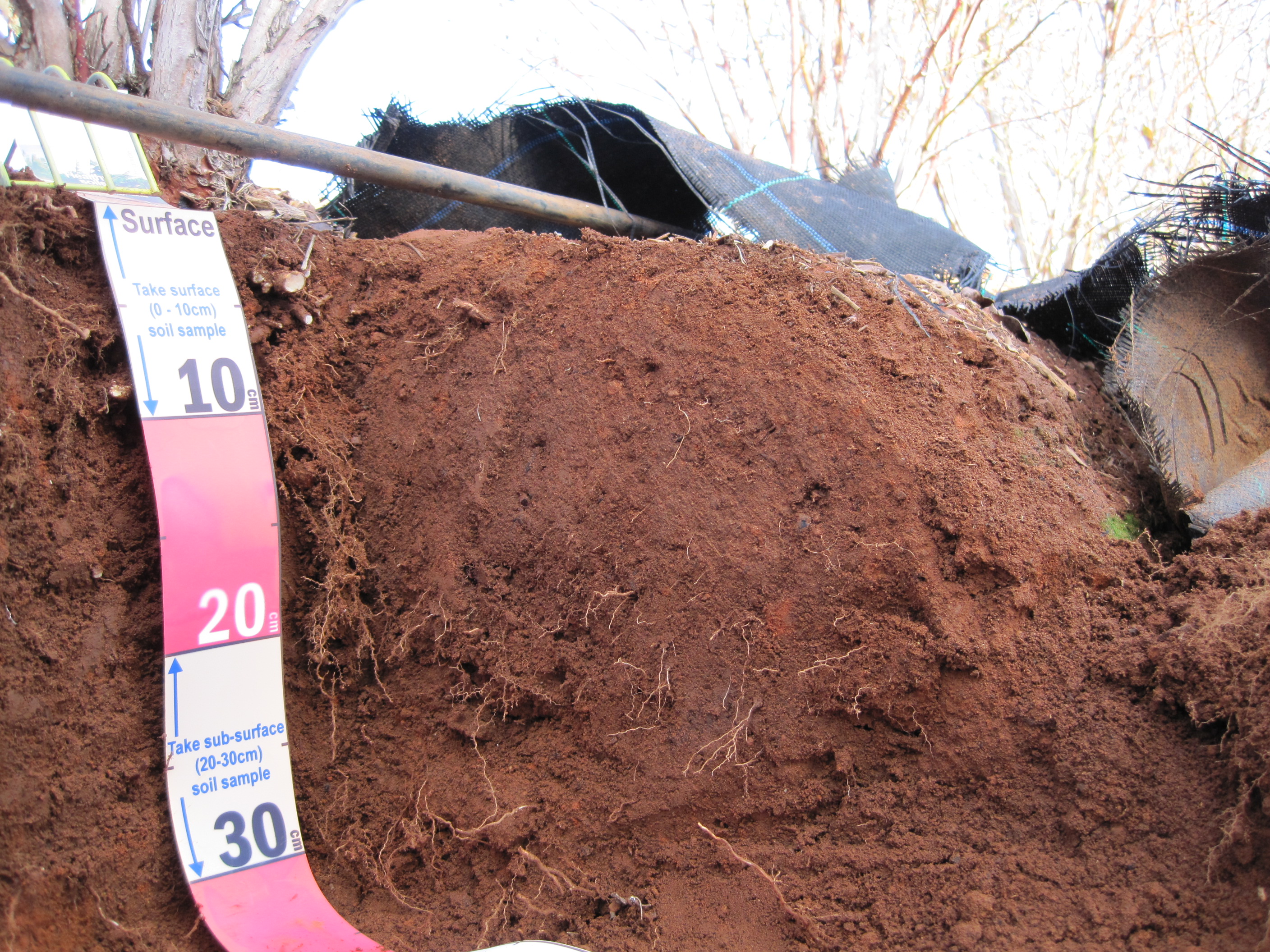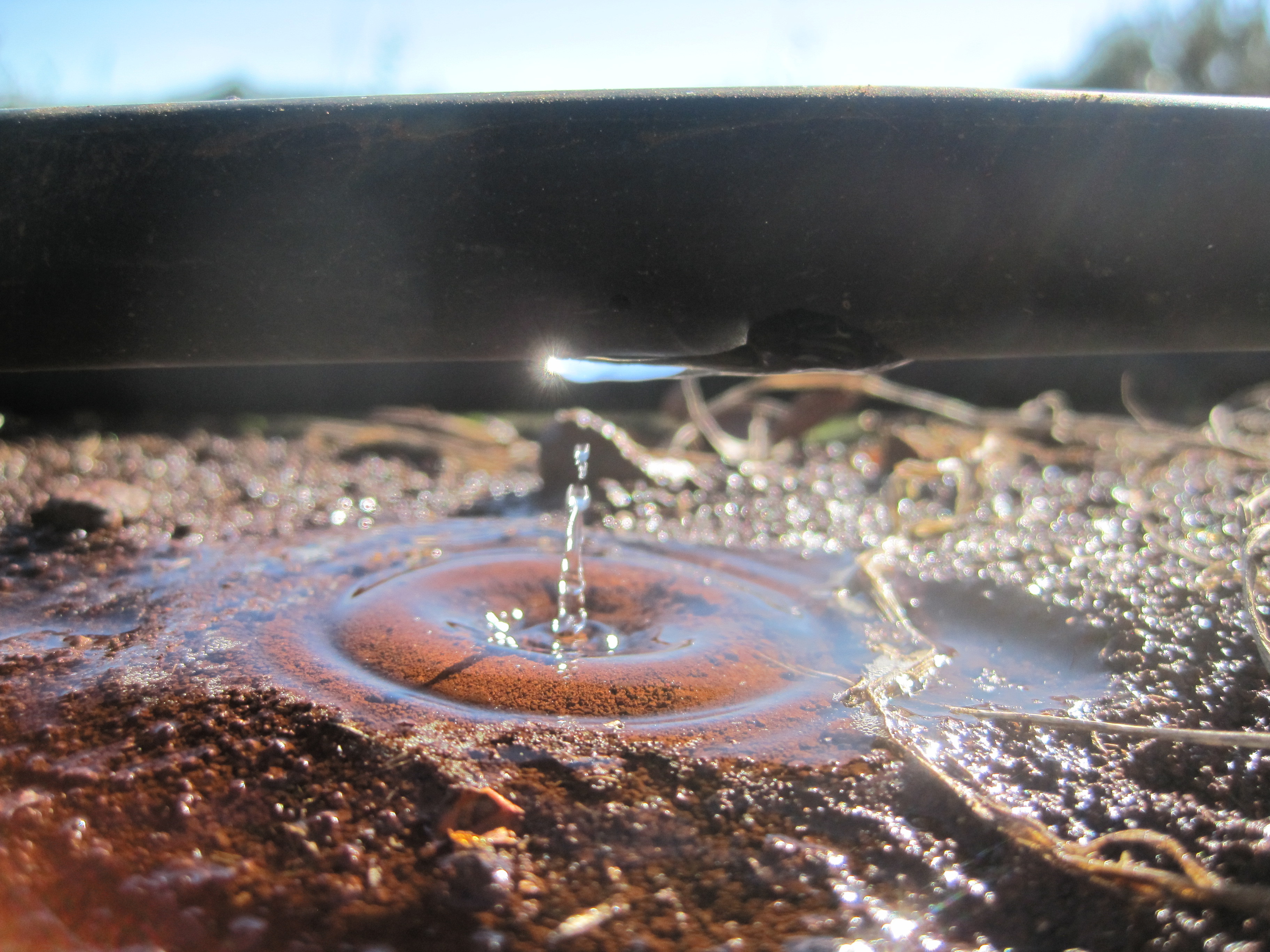
Why understanding soil texture is key to blueberry mound management
An FSG Insight from Justine Cox - NSW Department of Primary Industries Soil Scientist
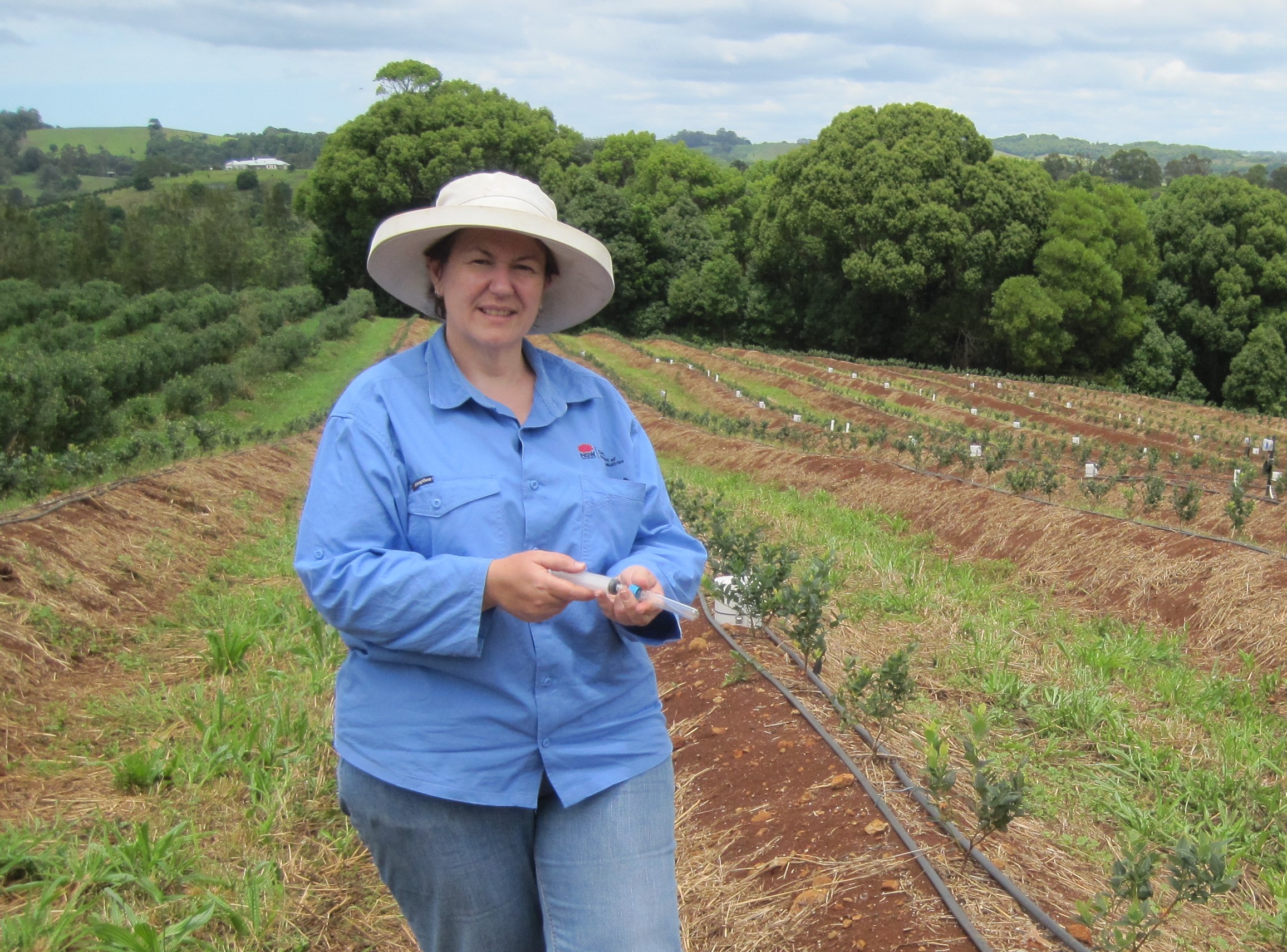
The aim of best practice nutrient management for blueberry growers is to apply the right amount of nutrition for optimum plant growth and berry yield, without losing excess nutrients that could end up in local water ways.
As blueberries are fertigated, the fate of applied nutrients is influenced by the rate and frequency of irrigation and how water moves through the soil.
Water movement in the soil is determined primarily by soil texture which influences the water infiltration rate, the water storage capacity, and the nutrient holding capacity of the soil.
Soil texture is determined by the percentage of sand, silt and clay particles in the soil. The size of each of these particles is quite different which contributes to the physical characteristics of the soil (Figure1).
Figure 1: Individual particle size range for the sand, silt and clay components of soil
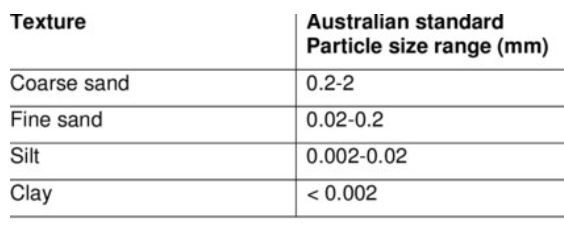
Soil texture is generally described using the following broad categories: sands, sandy loams, loams, clay loams, light clays, and medium-heavy clays. Loams are those soils with equal proportions of sand, silt and clay (Figure 2).
Figure 2: Soil texture is determined by the proportion of sand, silt and clay particles
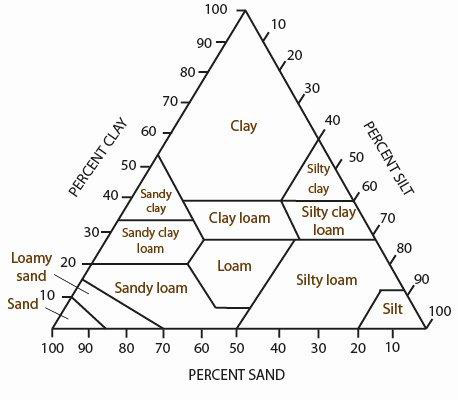
Soil texture directly influences nutrient retention and leaching capacity. Coarse grained sands have larger pores which drain rapidly and are poor at holding water and nutrients, whereas fine textured clays have a high nutrient retention capacity.
Clay soils also contain negative charges on their surface, allowing positively charged cations including calcium, potassium, magnesium and sodium to be retained.
Given this impact on nutrient retention, it is important to consider soil texture when prescribing fertiliser recommendations. Better targeting of fertiliser application also reduces costs for growers and demonstrates best practice management to the wider industry, community and regulators.
Figure 3: Soil profile of an excavated blueberry mound showing root distribution through the top 30cm.
Nitrogen and phosphorus are key nutrients for the blueberry plant, but when applied in excessive amounts can cause environmental harm in local waterways that drain into the wider marine estate.
Critically, excess available nitrogen and phosphorous that leaves the farm can lead to eutrophication in local waterways causing algal blooms and changes in the composition of communities of aquatic species.
Nitrogen can be present in soils in different forms and compounds, including nitrate and ammonium. Nitrate (NO3-) is a water soluble negative ion which means it readily moves through the soil profile in solution without attaching to soil particles. It can leach beyond the roots into hydrological pathways and groundwater. The risk of leaching is higher in sandy soils.
Ammonium (NH4+), the form of nitrogen that is most effectively utilised by blueberry plants, has a positive charge and is more inclined to remain in the soil until taken up by the plant, converted to nitrate, or leached through the soil profile.
Figure 4: The soil nitrogen cycle showing the role of mineralisation in making nitrogen available for plants to take up (Carson & Phillips 2020).
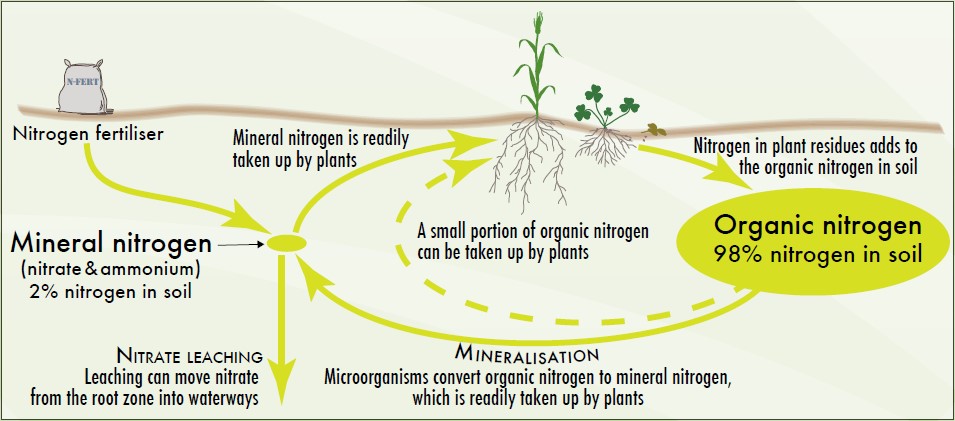
Phosphorous binds to the soil to varying degrees, depending on the capacity of the soil to ‘fix’ this nutrient, which is known as the soil’s Phosphorus Buffering Index or PBI. Soils with a high PBI will quickly bind phosphorous and make it unavailable for plant uptake.
PBI is closely related to soil texture. The PBI together with the soil’sColwell P (available phosphorous) and texture will affect the amount of phosphorous in applied fertiliser that will be available to the plant.
Phosphorous attached to soil particles will suspend in surface water and flow to the lowest point in the landscape, potentially ending up in creeks and streams where excess phosphate (PO4-) can increase the likelihood of algal blooms.
Adding mulch to some blueberry soils can help improve water infiltration and nutrient absorption by the plant, however success will depend on both the soil type and the mulch material.
Experiments conducted by NSW Department of Primary Industries across different soil textures comparing weed mat to woodchip mulch, found that all three soil textures investigated (red loam, red medium clay, and grey and red silty loam) had good drainage (Peverill et al, 1999)when the blueberry mounds were initially created.
The researchers found that red loam and red medium clay soils maintained good infiltration rates after twelve months.
Fig 5.1 Root distribution in red loam
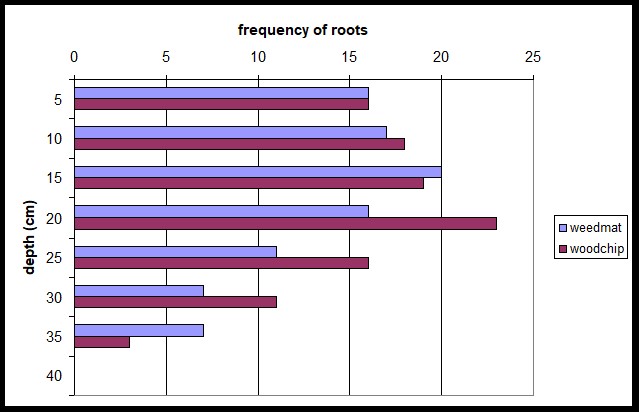
Fig 5.2 Root distribution in grey silty loam
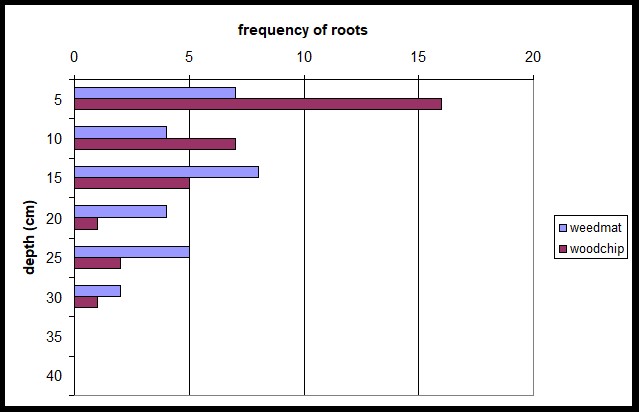
Figure 5.1 and 5.2: Root distribution and frequency in the soil profile for both weed mat and woodchip treatments.
However, the water infiltration rate in the grey and red silty loams halved after twelve months, which was likely to lead to inadequate moisture availability in the soil, and therefore reduced nutrient uptake.
Plant canopy size, root volume (Figure 5) and berry yield in these silty loams were also significantly smaller in subsequent years compared to the other soils in the experiment (Cox et al., 2014).
Figure 6: This soil has developed a crust on the surface, preventing the infiltration of water and nutrients into the soil profile.
The water infiltration problem may be due to the inherent properties of silty soil. Soils high in silt tend to develop a surface crust when wet as the pore spaces on the surface become blocked, causing water to run off rather than seep into the soil (Hazelton and Murphy 2016).
The issues outlined above demonstrate the significant impact of soil texture in managing blueberry mound nutrition. Given that texture plays such a crucial role in a plant’s capacity to access nutrients applied through fertigation, considering the texture of your soil is clearly just as important as testing for soil nutrition.
Assessing soil texture in the field
Soil texture can be measured using a lab test, however most people can make a reasonably accurate texture estimate in the field using a simple manual technique.
Firstly, take a small portion of soil (around 4 tablespoons) in your hand and remove any stones that are larger than 2 mm in size.
Add water to the sample of soil, make sure it’s fully moist, then use your thumb to create a ribbon with the soil and feel the consistency.
The grittiness or silkiness, and the length of the ribbon will indicate the soil texture. For example, a sandy soil feels gritty and will not make a ribbon at all, whereas a sandy loam will form a ribbon of 15 to 20 mm.
A clay loam will form a ribbon of 40 to 50 mm and feels smooth to manipulate.
A medium clay will form a ribbon of 85 to 100 mm, which handles like plasticine and can be moulded into a rod.
For more information see ‘Determining soil texture using the ribboning technique’, December 2014 Primefact 1363 First edition Agriculture NSW Water Unit
References
1. Peverill KI, Sparrow LA, Reuter DJ (1999). Soil Analysis: An Interpretation Manual. ASPAC, CSIRO Publishing, Australia.
2. Cox JA, Morris S and Dalby T (2014). Woodchip or weedmat? a comparative study on the effects of mulch on soil properties and blueberry yield. Acta Hort 1018:369-374
3. Hazelton P, & Murphy B (2016). Interpreting soil test results. What Do All the Numbers Mean? Third Edition. CSIRO Publishing, Australia.
4. NSW DPI Primefact 1509 (2016). Irrigation management of blueberries in Northern NSW.
5. Simpson M (2020). Water use efficiency in blueberries. Primefact 1783, First edition.
6. Soil organic matter (2020). NSW Department of Primary Industries Agriculture website (accessed September 2020).
7. Carson J & Phillips L (2020). Soil Nitrogen Supply – Soil Quality Fact Sheets: soilquality.org.au website (accessed September 2020).

